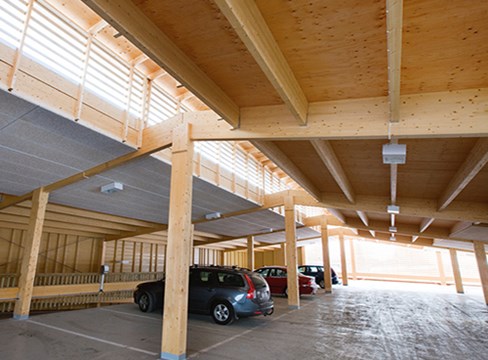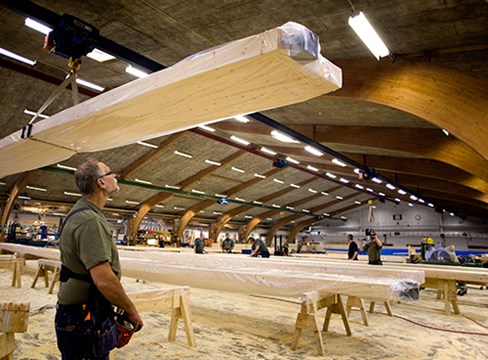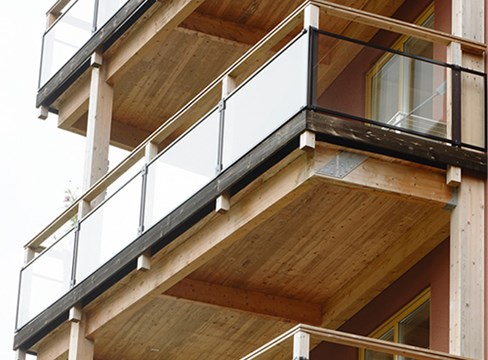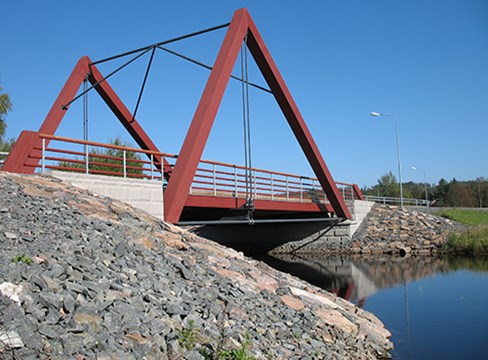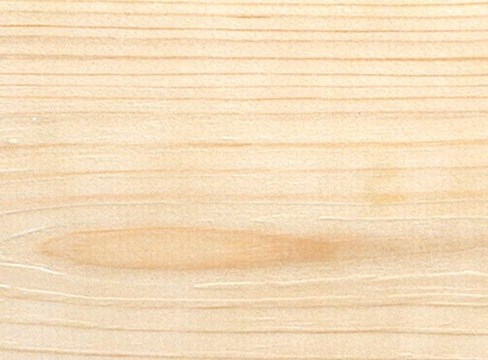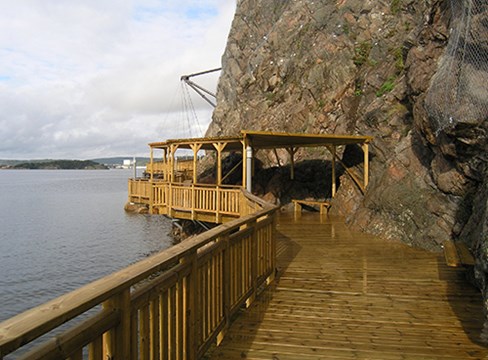Glulam and the environment
Glulam products have a natural place in an ecocycle society. The engineered wood is renewable and recyclable, while its manufacture is largely based on bio-energy.
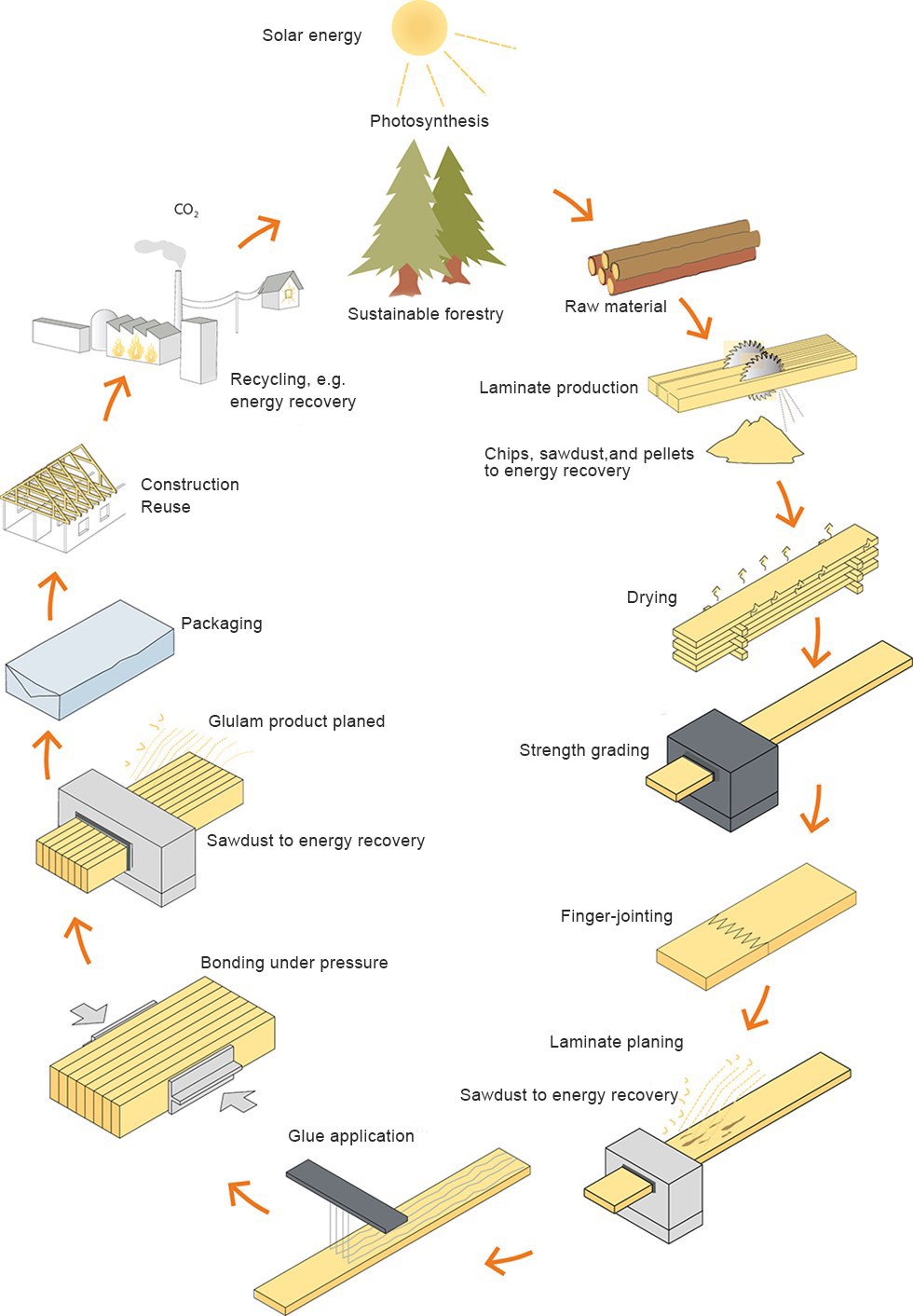
Glulam also need not be a waste problem, since after energy recovery the ash can eventually be returned to the forest from which the wood raw material originated.
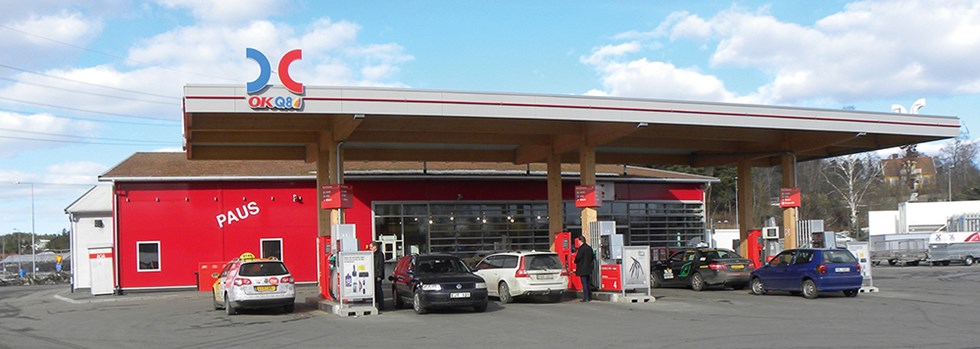
OKQ8 in Häggvik, Sollentuna. The first filling station in Sweden with a glulam frame.
Environmental properties
- The manufacture of glulam is a resource-efficient process. The raw material is mostly homegrown spruce from sustainably managed forests, plus a synthetic glue. The proportion of glue is negligible – less than 1% by weight.
- The products are normally supplied by the glulam manufacturer with what equates to a target moisture content of no more than 16%.
- The drying process largely makes use of bioproducts from the plants’ own production line.
- Glulam that is customised for the client ensures minimal waste at the construction site.
- The protective film in which it is wrapped is a recyclable material.
- Glulam has no negative environmental effects.
- Repairability is high and parts of a glulam beam or post can be replaced if necessary.
- Once the glulam product has reached the end of its life, it makes an excellent biofuel.
- Ecocycle thinking is an important starting point for research and development work on Swedish glulam products – and it is applied to the whole life cycle of glulam products.
Glulam in the natural ecocycle
 Spruce seedling
Spruce seedling
Environmental profile glulam
An environmental profile is a quantitative calculation of a product’s environmental impact in the form of emissions to:
- air
- water
- land
plus information on
- primary resource extraction – resources that have been taken from the earth’s crust
- energy use – the part of the primary resource extraction that is used for energy and is converted into emissions
- input materials – materials whose environmental impact has not been taken into account in calculating the environmental profile of the glulam product.
The manufacturers’ environmental product declarations set out the product’s environmental profile.
It is generally the case that the manufacturer can only give quantitative and objective data for its product from cradle to gate. To obtain quantitative data for the entire life cycle, it is necessary to work with credible scenarios – as the eventual fate of the product must also be taken into account, and that may be 5, 50 or 500 years down the line, since no one actually knows what will happen to the product.
To conduct a complete life cycle analysis (LCA), the use phase and the end-of-life phase must also be added into the equation. This information is held by the client, who knows where the product will be used.
Life cycle analysis
Life cycle analysis (LCA) is a tool for assessing the full environmental impact of different products with the same function.
After all, there is no knowing for sure what a product in an environmental product declaration will be used for.

Spruce forest
Comparison between glulam, steel and concrete
Below is a comparison between simply supported beams made from glulam, steel and concrete. The comparison was conducted by IVL Swedish Environmental Research Institute on behalf of Swedish glulam manufacturers.
A key step in an LCA is the inventory analysis. In this case, we assume that we have three environmental product declarations in front of us, for:
- glulam
- steel
- concrete.
Added to this is transport to the construction site, which is 150 km from each material supplier. As this is a simplified study, the environmental impact of installing the beam, etc. and then taking it down when the building is demolished is considered to be of marginal significance. It is also assumed that all the beams are recycled in some way. In this analysis we are using a product-specific LCA concept called Lifetime Assessment (LTA). In simple terms, this means studying the product’s lifetime rather than the life cycle of the resources, as in an LCA.
An LCA involves making an assessment. This is necessary when comparing different alternatives and their differing environmental impact. It is possible, of course, to assess the different elements in the environmental product declaration’s profile, such as the environmental impact of the various constituent materials, in order to highlight which component, etc. stands out at this point.
The problem is that there is no generally accepted environmental assessment index, which is why such a thing is not used in the environmental product declaration.
Glulam has the lowest environmental impact
The table below presents a few types of environmental impact for the three alternative beams.
| Beam → | Glulam | Steel | Concrete |
| Greenhouse effect | 1 | 13 | 8 |
| Acidification | 1 | 3 | 3 |
| Eutrophication | 1 | 2 | 1 |
Table: Environmental impact of glulam beams compared with steel and concrete beams.
CONDITIONS: Functional unit = simply supported roof beam with span 12 m, incline 8°, reliability class 2, service class 1. Same load assumptions and deflection parameters (l/200) in all three design cases. In the steel and concrete alternatives, 50% of the steel is assumed to be recycled.
All the glulam manufacturers in Sweden have drawn up their own environmental product declarations.
These can be ordered from each manufacturer. See the grey column on this page.


